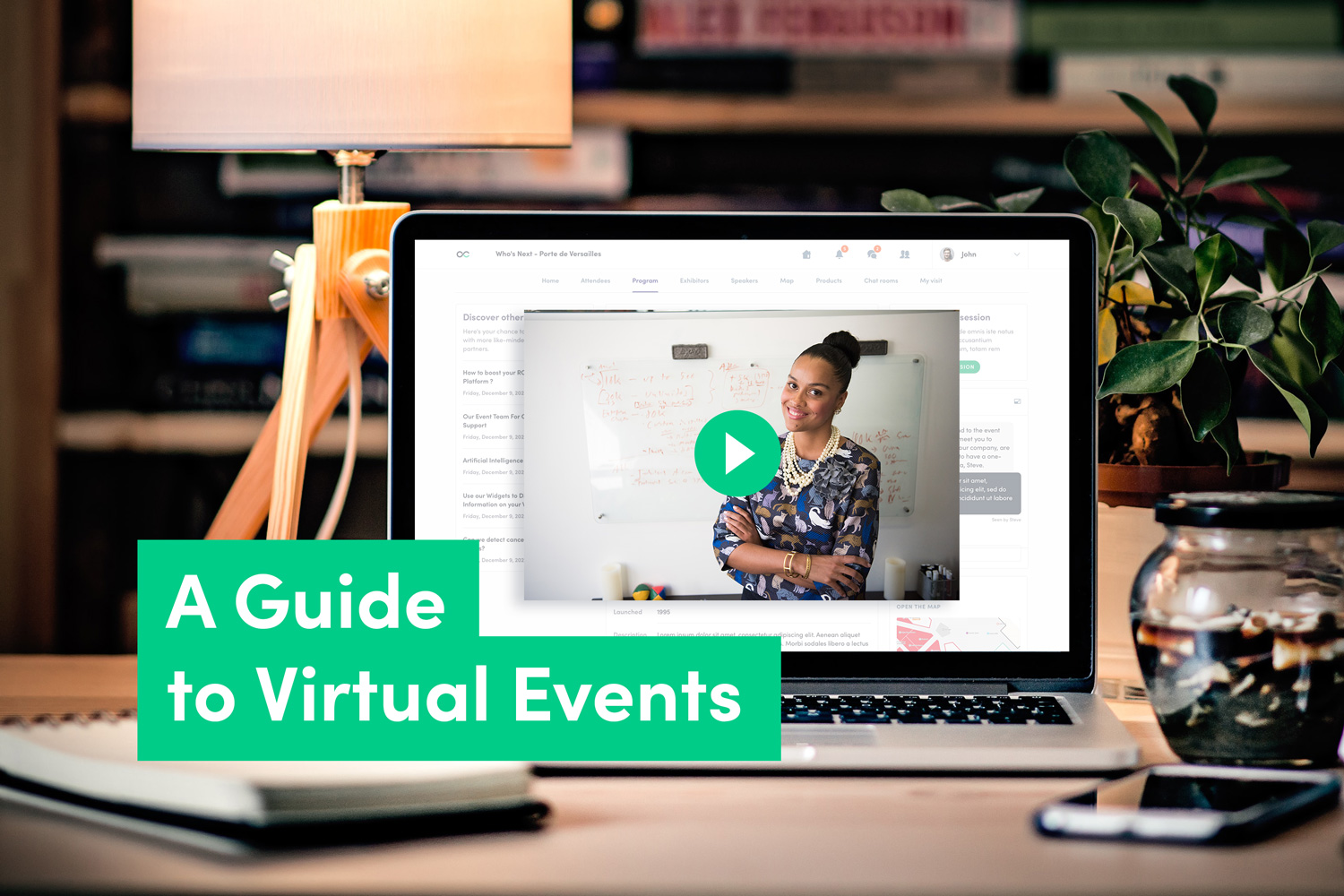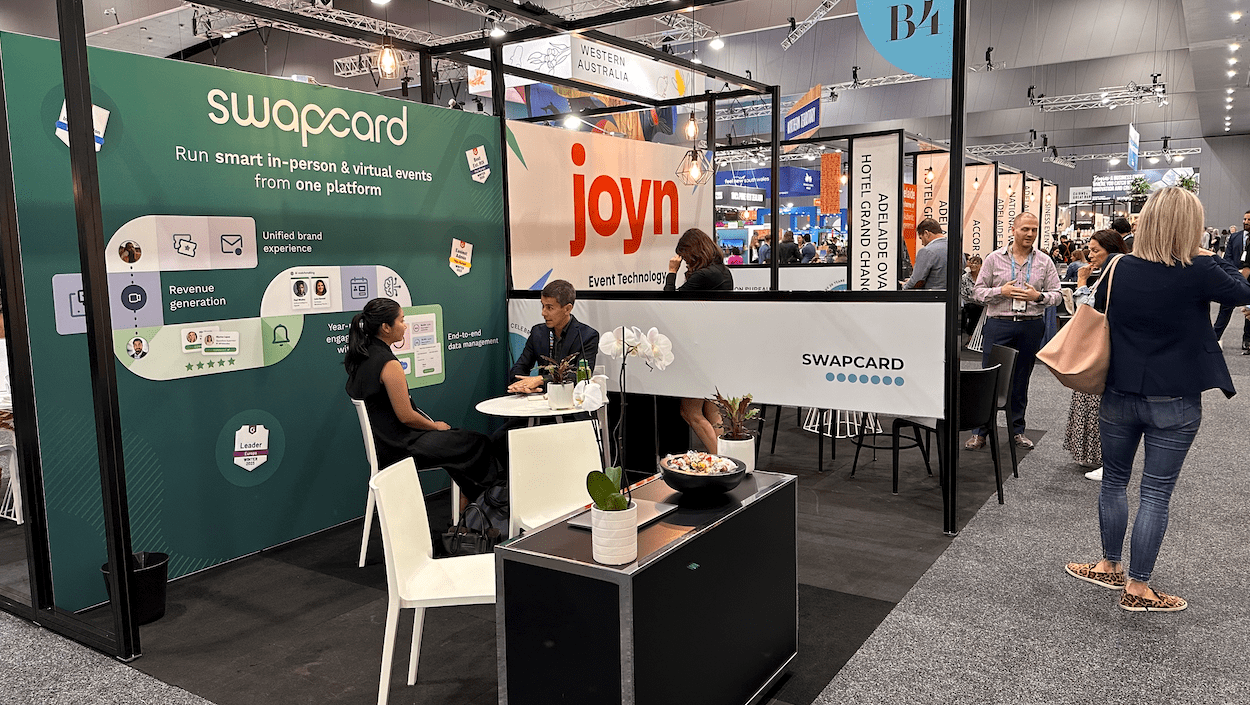The events industry has found itself facing a unique challenge. Due to COVID-19 (coronavirus), many global events have been canceled, postponed or have decided to go virtual. Now is the time for the events industry community to come together and embrace online events. Adaptability is key to staying resilient.
.png?width=547&name=darwin%20(1).png)
Event organizers must seize this opportunity to prove their place in the industry ecosystem. You control the narrative around your own event - use your voice to relay trust, calm and confidence instead of fear and panic. While you might be experiencing feelings of panic and fear yourself, we at Swapcard can provide you with a contingency option - innovative features on our event apps - that will help you put on valuable events, even during this difficult time.
We can help you transition from a live event to a virtual one. Some big names in the events industry have recently decided to go virtual, including Collision, Google Cloud Next 20 and Dell Technologies World. This is a temporary solution that the industry has come up with to deal with the coronavirus outbreak. It’s unlikely that virtual events will be the new norm, but having a virtual contingency plan for event management will mitigate damages suffered when live events are cancelled.
Benefits of a Virtual Event
Running your first online event can be stressful. But if planned and executed well, virtual events can still provide value for attendees, sponsors and exhibitors.
- Health & safety: Not having any physical attendees means you don't have to worry about a venue, catering or attendee health & safety.
- Costs: This not only lowers operating costs, but also makes things easier to manage for events organizers.
- Audience reach: Attendees will have zero travel or accommodation costs, so virtual events could potentially reach a larger audience or a whole new pool of audience, including people who wouldn't have been able to travel to a physical event.
- Go Green! Digital events have a smaller carbon footprint because they don’t require so many people to fly, eat and create waste. You’ll be contributing to a more sustainable economy.
It’s not always easy and there are certainly challenges to gathering people virtually:
- If you are switching from a live event to a virtual one, you might lose certain deposits paid for venues and catering. To avoid this, ensure you have insurance that covers aspects you can't control.
- People outside of the event’s time zone, from China to Los Angeles, might not join if sessions fall during their night hours. They can still view recordings, but real time interactions could decrease.
- Attendees may be less inclined to engage with speakers or other attendees if there are no interactive features. After all, physical events are naturally more interactive, so digital gatherings need a bit of a boost.
- At physical events, serendipity plays an important role in forging meaningful bonds. Meeting someone by accident at the coffee bar could lead to a great connection that you might not otherwise have made. This type of meeting doesn’t happen as often during virtual events.
- There is also something to be said for the power of face-to-face interactions for all your participants: audience members, speakers, sponsors and exhibitors. Seeing someone in person ensures a deeper level of trust and familiarity.
- Because everything is running online during a virtual event, your platform's bandwidth and speed are crucial. There is no room for websites crashing, connection errors or live streams buffering. Make sure your virtual event can support your peak audience at all times.
How To Run a Successful Virtual Event
The challenges of virtual events can be overcome by using the right tools and being prepared. Remember why people attend events in the first place. Knowledge, networking and gaining business leads are three of the highest priorities for any participant. People want to learn more about their industry and they want to forge meaningful business connections. For exhibitors and sponsors, live events are where they meet the majority of their potential business leads for the coming year. This might happen in a planned, structured way or by chance in a social setting. Either way, virtual events have to provide the right tools to create opportunities for all attendees to create these valuable business links.
All the basics about running a successful physical event should still apply when going virtual: a strong event marketing strategy, inspiring speakers, relevant and informative content and the opportunity for attendees to network. But with some twists.
Choose the right platform for you
You want to maximize attendance. Make sure you choose the best online event software platform for your event.
- While a mobile app might be great during a physical event because people are moving around on site all day, a web-based app is more suited for a virtual event. People will be joining your virtual event from home or from their offices, which means they’ll be in front of their computer screens. Make sure the platform you choose has a web-based version that is feature rich and intuitive and you’ll be on your way to achieving a high usage rate.
- A good platform includes streaming and video call integrations for sessions and meetings so you can get great audience engagement and offer quality networking opportunities.
- But make sure that attendees know how to use the platform. Offer onboarding sessions, training videos, email explanations or any other creative ways you can find to ensure smooth participant onboarding - that will help you get the highest adoption rate.
- Your platform should also support integrations with social media for live streaming and with audience response features and notifications to help audiences interact in real time.
Optimize knowledge and learning for a virtual audience
The other main reason people attend events is to gain knowledge and learn something new about their industry. There is no reason to sacrifice the quality or value of your event's educational content just because it’s happening online instead of in person. Virtual sessions can be highly engaging when the right tools are used. Here’s how to make sure attendees stay awake, stay interested and learn as much as possible, even from a distance.
- With a virtual event, you’ll be transitioning to live streams and recordings of sessions, where the audience watches the speaker from their computer screen.
- With Swapcard’s event apps, "Watch stream" buttons can be integrated directly into each session of your event, making it easy for participants to connect and watch the sessions.
- Make sure speakers include dynamic visuals on short, colourful, impactful slides - and change those slides every 2-3 minutes to keep participants engaged.
- Integrations such as Glisser, Slido and others are creative alternatives to boring slide presentations. They include fun tools such as scoring, polls, word clouds and social walls for audiences. In our experience, 68% of visitors come to learn from experts but their attention span is limited to 10 minutes. Audience response tools increase interaction, and therefore attention span, by 40%. So focus on "interaction"!
- Speakers also need to make sure their content is even more engaging than usual. Direct questions to the audience are an effective way to ask for their input. Audience members can answer via polls or in a chatroom, which is an online forum where attendees can discuss and debate sessions in real time. Swapcard can integrate these chatrooms directly into each session on the platform, making it easy to find for even the least tech-savvy attendees.
- On the organizer’s side, live tweeting or video sharing your way through the event on your social networking platforms is a great way to engage participants from a distance. Everyone likes to see themselves tagged on social media!
- You can also record speaker sessions directly through the platform you work with. Saving each session as separate videos makes for a great portfolio of marketing content. You can use the clips as YouTube content or elaborate on each clip for articles or podcast episodes, interviews and even e-books throughout the year.
Yes, you can offer valuable virtual networking
We know that creating connections is one of the main reasons people attend events. We understand the value of face-to-face connections at physical events.
During virtual events, the option of random meetings is minimized, so people need an alternative. That’s why networks such as LinkedIn are so successful. People have no problem networking online. Show attendees that you can offer virtual networking opportunities through your platform that are potentially just as valuable as face-to-face connections.
- Platforms that use AI (artificial intelligence) match people together based on their profiles. They suggest connections to each attendee and can help target relevant people. Suggestions will pop up within the app and attendees will be able to schedule meetings with potential business connections. This is an invaluable feature for both online and offline events.
- You will need to optimize how people meet during virtual events. Swapcard offers attendees the option to have digital “face-to-face” meetings with video calls for a personal and emotional encounter.
- And just in case participants get distracted at home during the virtual event and forget about their commitments, Swapcard’s push notifications feature sends video call links in pop-up reminders for scheduled meetings, ensuring they’re never late to a meeting.
Online and offline, event organizers bring people together and help create networks and build relationships. Virtual networking can be extremely valuable. While nothing beats the real deal - face-to-face meetings - online networking can lead to great results if done right.
Consumer products and trade shows in a virtual world
Now, some of you must be thinking: but what about events of a physical nature, such as consumer goods shows? The experience at trade shows is always different due to the nature of how deals are done between vendors and their leads. Physical products usually need to be touched and seen before being bought.
But if you think about it, virtual trade shows already exist in a form - like Amazon! Any online retailer is a virtual trade show. People buy products without seeing and touching them all the time. There’s no reason a virtual trade show should be less valuable to vendors than a physical one during this period. Once again, it's all about having the right tools from the beginning of the event planning process - great photos and videos of all products, interesting and exhaustive descriptions and online support for questions from attendees can boost a virtual trade show.
Swapcard has the technology and expertise to successfully take your event online through your event app. We're thrilled to announce a new series of updates to our platform, making your events apps more powerful and user-friendly for virtual events. Plan your next virtual (or physical) event with us and save 30% before the end of June 2020.










